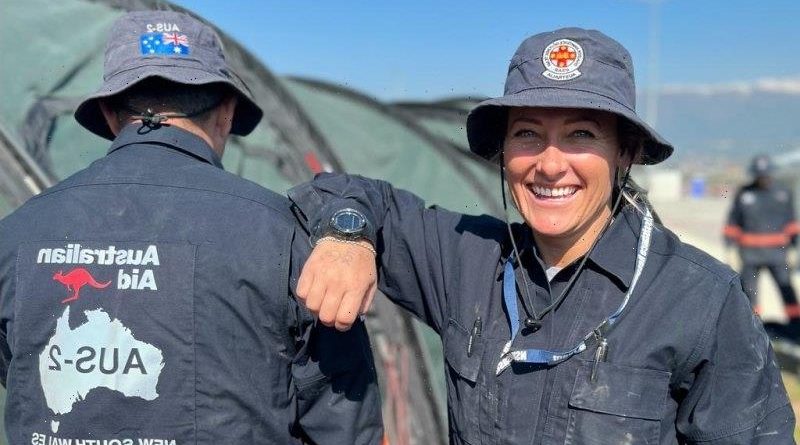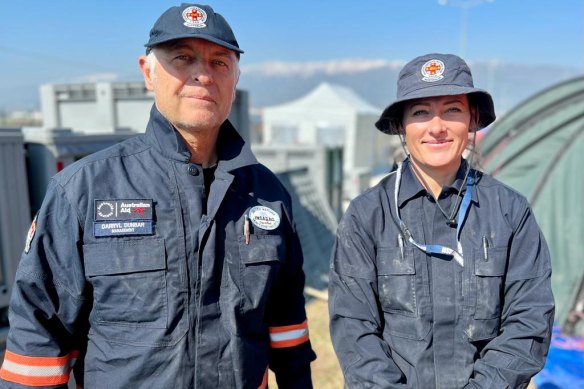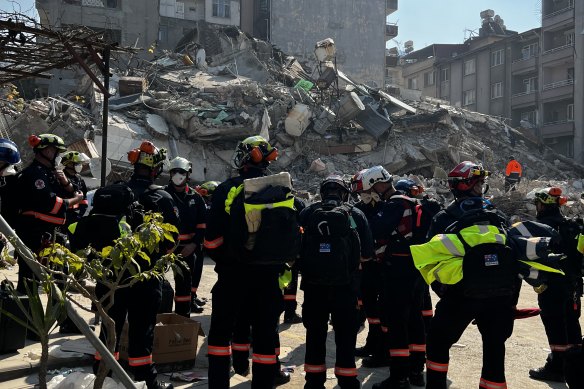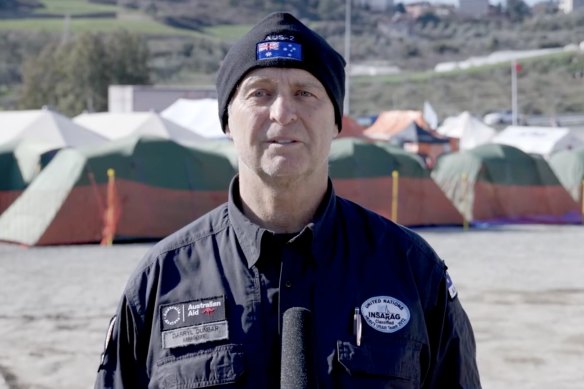‘Sacred task’ of Australian rescue workers helps families confront tragedy
Australian rescuers helping victims of Turkey’s deadly earthquake have spoken about their tragic task of reuniting countless families with bodies of loved ones.
The team of 72 Australian search and rescuers are in Hatay, the worst-affected province of the quake that has killed at least 45,000 people in Turkey and Syria and left more than a million displaced.
While they have not yet been able to pull anyone alive from the rubble, the firefighters, doctors, paramedics and engineers say the task has been of vital importance for victims’ families.
Nat Tarrant and Darryl Dunbar from the Australian Disaster Assistance Response Team working in earthquake-affected Turkey.Credit:Nathan Fulton
They have been working out of a completely self-sufficient “greenfield” base that has tonnes of specialist equipment for helping to locate bodies but puts no strain on the devastated area’s food and water supplies.
Nat Tarrant from NSW Fire and Rescue, usually based in Newcastle, is one of the 72 specialists who arrived in Turkey last Sunday.
In an exclusive interview with The Sydney Morning Herald and The Age, the 37-year-old said the grim task was also a sacred one.
The Disaster Assistance Response Team in Turkey.Credit:DFAT
″As amazing as it would be to give loved ones back a live relative, this is also rewarding – they’ve lost everything, they’ve lost every belonging they’ve ever had, and now just to get the body back of one of their relatives – that’s what I’d want,″ she said.
″It blows your mind every morning that you leave your camp and go to a different area and see how widespread it is, and how bad it is – it’s so hard to fathom.″
“It’s rewarding giving back to the families – that kind of takes away from the traumatic side of things.”
Chief superintendent and team leader Darryl Dunbar, 58, said he had never responded to an event that had caused so much destruction.
Chief Superintendent Darryl Dunbar, Australian search and rescue team leader in Turkey.Credit:DFAT
“I’m showing my age here – I’ve responded to Thredbo, Christchurch, Tropical Cyclone Debbie and been overseas for wildfire deployments, I’ve never seen this scale of disaster,” he said.
“This scale of disaster would have overwhelmed any government’s emergency management authorities.
“I’ve been operating in the United Nations international search and rescue advisory group for over 10 years, and for all our exercise, I’ve never seen a disaster of this scale. ”
Dunbar said they’d been able to overcome the language barrier because one of the rescuers has a Turkish background and been acting as an interpreter.
“That’s been a blessing,” he said, detailing how use of local information combined with high-tech equipment the team had flown in was helping recover bodies.
“We have drones, we have engineers, we have listening devices, we have search cams, so we identify the victim, access the victim and interpreters assist us if we find a victim, we then provide medical aid and then extricate that victim,” he said.
The local community had also been volunteering to support the Australian rescuers doing their work.
“They know who we are. They go ‘Australia, Australia, Australia,’ they see the kangaroo, they know who we are and they love us,” Tarrant said.
The government has spent $18 million on the relief assistance to Turkey. Both Dunbar and Tarrant said that it was money well spent.
“We’re seeing in regards to what we can give back to the community, from my perspective, money well spent assisting a country in their hour of need,” Dunbar said.
Tarrant said the support from her friends and family at home for her work was hugely motivating.
“We’ve heard a few stories from people back home and the comments from people back home about how proud they are and how proud they are to be Australian and when you’re over here, shivering your arse off, it’s nice to know that people are proud for us to be over here doing good work,” she said.
Get a note directly from our foreign correspondents on what’s making headlines around the world. Sign up for the weekly What in the World newsletter here.
Most Viewed in World
From our partners
Source: Read Full Article







